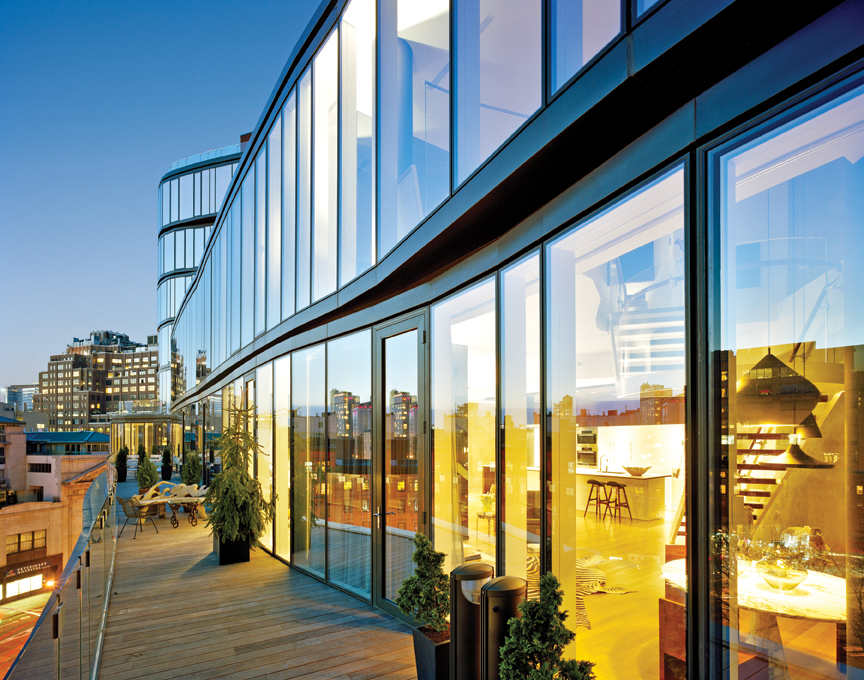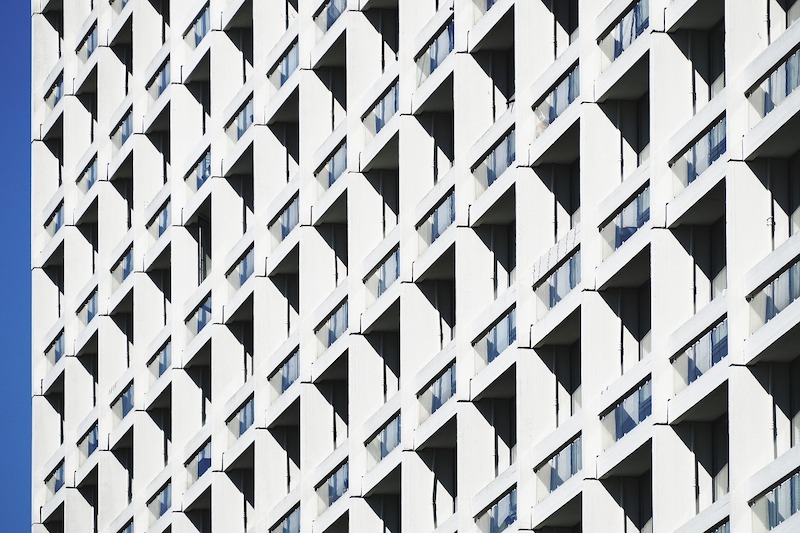After more than nine consecutive years of steady growth, proposal activity in the U.S. Multifamily Housing market flattened in the 1st Quarter amid the COVID-19 crisis. The Quarterly Market Forecast (QMF) survey of architecture, engineering and construction (A/E/C) firms reported the first negative result for Multifamily since the 3rd Quarter of 2010.
Multifamily has consistently been one of the strongest performers among 58 submarkets measured in PSMJ Resources’ quarterly survey. This includes the 4th Quarter of 2019 when Multifamily’s Net Plus/Minus Index (NPMI) of 54% was the highest among all submarkets. Its NPMI slid to -2% in the 1st Quarter of 2020, as the percentage of respondents reporting a quarter-to-quarter decrease in proposal activity climbed from 4% to 31%.
PSMJ’s NPMI expresses the difference between the percentage of firms reporting an increase in proposal activity and those reporting a decrease over the three-month period. A consistent group of over 300 A/E/C firm leaders participate regularly, with 288 contributing to the most recent survey. It was conducted from March 24-30.

Despite the drop into the negative, Multifamily held up far better than three other Housing submarkets – Single-Family Properties (-31%), Single-Family Developments (-28%) and Condominiums (-28%) were among the 12 poorest-performing submarkets in the 1st Quarter.
Prior to this crisis, the consensus among industry economists and experts was that Multifamily would stay strong in 2020, albeit with some challenges to face. National vacancy rates were creeping up and much of the supply deficit had been filled. Nonetheless, significant amounts of investment money remained available and demand persisted in varying levels regionally. The fact that Multifamily proposal activity wasn’t as negatively impacted in the 1st Quarter as other Housing submarkets were, even with the COVID-19 crisis beginning to affect the market in March, suggests that it could recover comparatively quickly and seamlessly when and where restrictions are eased.
PSMJ Senior Principal David Burstein, P.E., AECPM, said he expects all housing markets to rebound after the health crisis passes and the record-low interest rates endure. “Pent up demand should make its presence felt by the end of the 3rd Quarter, and even more so in the 4th Quarter, especially if we see movement on an infrastructure bill.”
Multifamily’s performance in the QMF reinforces how consistently lucrative the sector has been for nearly a decade. After recording an NPMI of -5% in the 3rd Quarter of 2010, the Multifamily submarket experienced four consecutive quarters with a respectable NPMI between 20% and 26%. It jumped to a healthy 44% in the 4th Quarter of 2012 and remained at or above 42% for the next 28 quarters, all the way through 2019.
For the 4th Quarter of 2019, 58% of respondents said that proposal opportunities had increased in the Multifamily market, with only 4% reporting a decrease. For the 1st Quarter of 2020, increases were halved to 29%, compared with 31% that saw a drop in proposal activity.
Consulting and publishing firm PSMJ Resources, Inc., has been conducting the QMF survey each quarter since 2003. You can find more information at https://www.psmj.com/surveys/quarterly-market-forecast-2.
Related Stories
| Mar 22, 2011
Mayor Bloomberg unveils plans for New York City’s largest new affordable housing complex since the ’70s
Plans for Hunter’s Point South, the largest new affordable housing complex to be built in New York City since the 1970s, include new residences for 5,000 families, with more than 900 in this first phase. A development team consisting of Phipps Houses, Related Companies, and Monadnock Construction has been selected to build the residential portion of the first phase of the Queens waterfront complex, which includes two mixed-use buildings comprising more than 900 housing units and roughly 20,000 square feet of new retail space.
| Mar 17, 2011
Perkins Eastman launches The Green House prototype design package
Design and architecture firm Perkins Eastman is pleased to join The Green House project and NCB Capital Impact in announcing the launch of The Green House Prototype Design Package. The Prototype will help providers develop small home senior living communities with greater efficiency and cost savings—all to the standards of care developed by The Green House project.
| Mar 11, 2011
Renovation energizes retirement community in Massachusetts
The 12-year-old Edgewood Retirement Community in Andover, Mass., underwent a major 40,000-sf expansion and renovation that added 60 patient care beds in the long-term care unit, a new 17,000-sf, 40-bed cognitive impairment unit, and an 80-seat informal dining bistro.
| Mar 11, 2011
Mixed-income retirement community in Maryland based on holistic care
The Green House Residences at Stadium Place in Waverly, Md., is a five-story, 40,600-sf, mixed-income retirement community based on a holistic continuum of care concept developed by Dr. Bill Thomas. Each of the four residential floors houses a self-contained home for 12 residents that includes 12 bedrooms/baths organized around a common living/social area called the “hearth,” which includes a kitchen, living room with fireplace, and dining area.
| Mar 11, 2011
Texas A&M mixed-use community will focus on green living
HOK, Realty Appreciation, and Texas A&M University are working on the Urban Living Laboratory, a 1.2-million-sf mixed-use project owned by the university. The five-phase, live-work-play project will include offices, retail, multifamily apartments, and two hotels.
| Mar 1, 2011
How to make rentals more attractive as the American dream evolves, adapts
Roger K. Lewis, architect and professor emeritus of architecture at the University of Maryland, writes in the Washington Post about the rising market demand for rental housing and how Building Teams can make these properties a desirable choice for consumer, not just an economically prudent and necessary one.
| Feb 15, 2011
New Orleans' rebuilt public housing architecture gets mixed reviews
The architecture of New Orleans’ new public housing is awash with optimism about how urban-design will improve residents' lives—but the changes are based on the idealism of an earlier era that’s being erased and revised.
| Feb 11, 2011
Chicago high-rise mixes condos with classrooms for Art Institute students
The Legacy at Millennium Park is a 72-story, mixed-use complex that rises high above Chicago’s Michigan Avenue. The glass tower, designed by Solomon Cordwell Buenz, is mostly residential, but also includes 41,000 sf of classroom space for the School of the Art Institute of Chicago and another 7,400 sf of retail space. The building’s 355 one-, two-, three-, and four-bedroom condominiums range from 875 sf to 9,300 sf, and there are seven levels of parking. Sky patios on the 15th, 42nd, and 60th floors give owners outdoor access and views of Lake Michigan.
| Feb 11, 2011
Sustainable community center to serve Angelinos in need
Harbor Interfaith Services, a nonprofit serving the homeless and working poor in the Harbor Area and South Bay communities of Los Angeles, engaged Withee Malcolm Architects to design a new 15,000-sf family resource center. The architects, who are working pro bono for the initial phase, created a family-centered design that consolidates all programs into a single building. The new three-story space will house a resource center, food pantry, nursery and pre-school, and administrative offices, plus indoor and outdoor play spaces and underground parking. The building’s scale and setbacks will help it blend with its residential neighbors, while its low-flow fixtures, low-VOC and recycled materials, and energy-efficient mechanical equipment and appliances will help it earn LEED certification.
| Feb 11, 2011
Apartment complex caters to University of Minnesota students
Twin Cities firm Elness Swenson Graham Architects designed the new Stadium Village Flats, in the University of Minnesota’s East Bank Campus, with students in mind. The $30 million, six-story residential/retail complex will include 120 furnished apartments with fitness rooms and lounges on each floor. More than 5,000 sf of first-floor retail space and two levels of below-ground parking will complete the complex. Opus AE Group Inc., based in Minneapolis, will provide structural engineering services.















